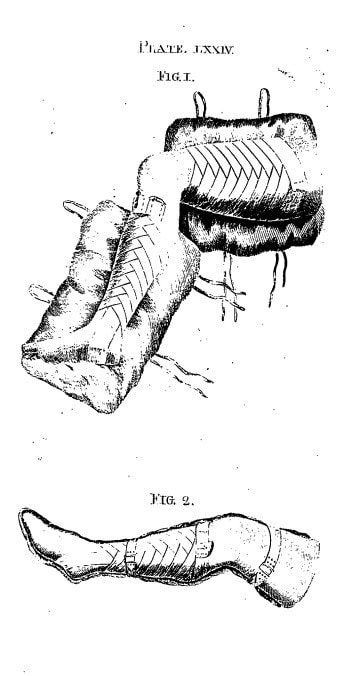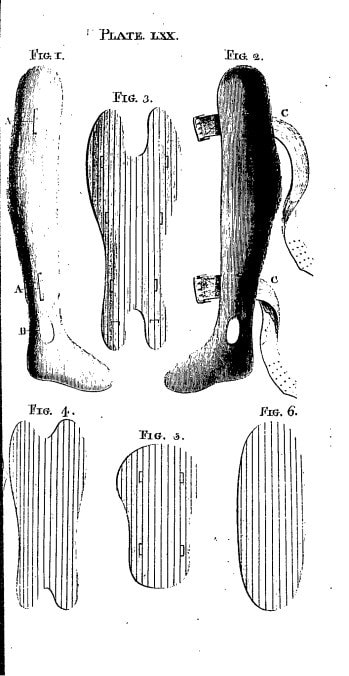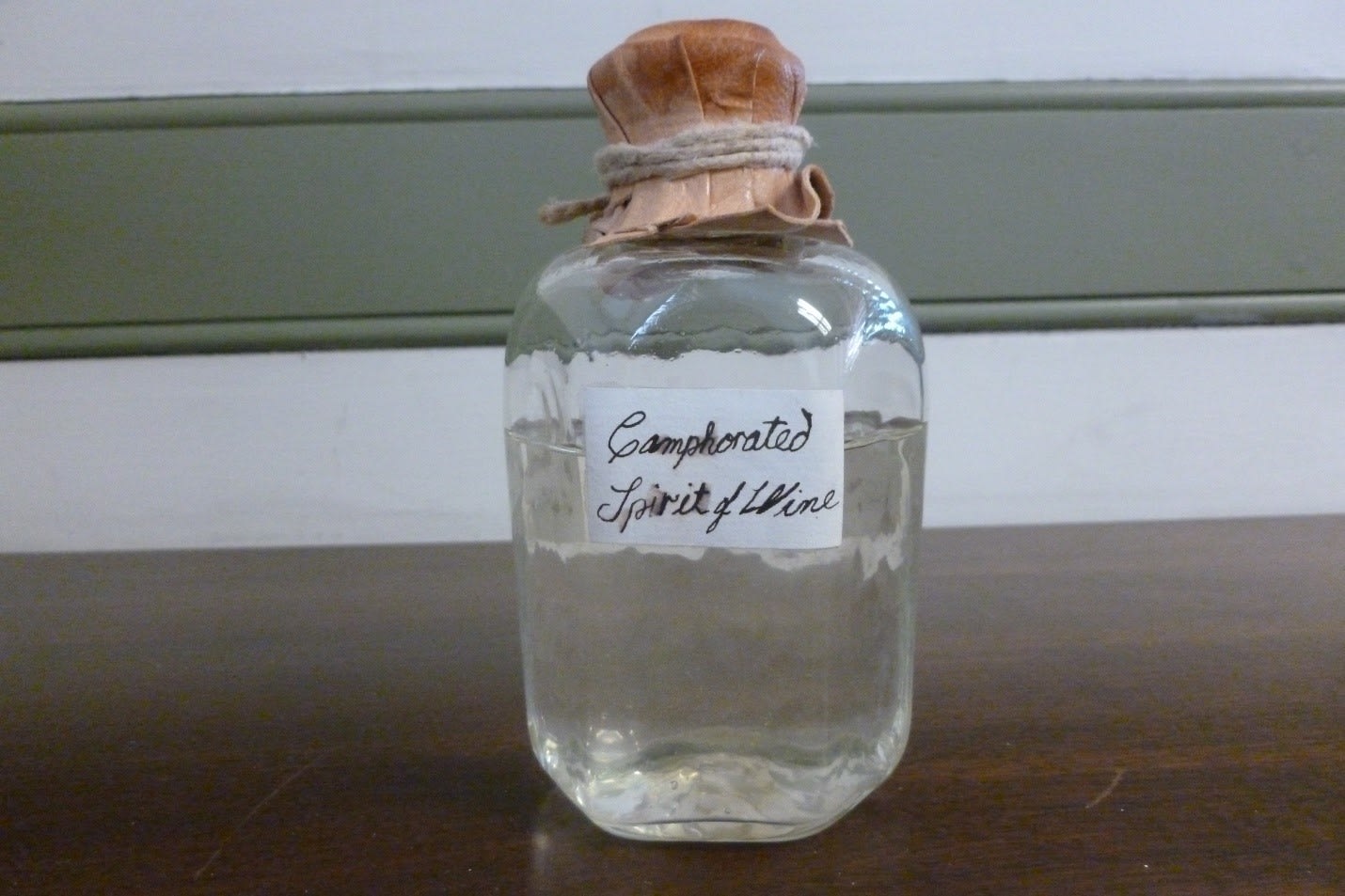235 years ago on April 24, 1785, Dr. Galt made an entry in his daybook listing care for members of the William Moody household for what must have been a terrible accident. The incident occurred in the middle of the night. William Moody had a fractured hand and a dislocated radius. Moody’s wife suffered from a fractured tibia. Moody’s son was treated for a dislocated ulna and had a discutient embrocation applied. A fourth person, Miss Fanny Bryan was also treated. She was examined, bled, and an embrocation was applied as well. We may never know what occurred that night to cause all of this trauma, but we can look at the care these people received in the 18th century.
Without X-rays, broken bones were determined by sight, touch, hearing (listening for the bones scraping against each other upon gentle movement), and by the circumstances surrounding the accident. Keep in mind that there was no anesthesia, and there is no indication in the account that opium was administered before or after the procedures. Lorenz Heister (1743) described setting a broken hand by spreading the hand on a table and then moving the bones back in position. To set the tibia, first the muscles were relaxed by bending the knee and slightly extending the foot. Then the surgeon pulled the leg in opposite directions and slowly released the tension hoping the bones realigned or the process had to be repeated.

Once the bones were set, they were bandaged and splinted. Splints were made of pasteboard or wood glued to leather. Wood splints were preferred due to their strength. Of most importance, however, was that the splint be of the proper design to fit the part and the proper length in order to support the bones. It wasn’t until the nineteenth century that surgeons started experimenting with plaster casting. The Dutch surgeon, Antonius Mathijsen (1805-1878) is credited with creating the first plaster of Paris cast which became the basis for modern casting. For a bone broken in the leg, the patient was required to remain in bed 6 to 8 weeks while the bones healed. A patient with broken bones in the arm and hand had more mobility and was expected to heal in approximately four weeks.

Reducing a dislocated ulna and radius required two assistants. Since this incident occurred in the middle of the night, it is probable that Dr. Galt had to utilize members of the Moody household to assist. The humerus and fore arm were extended in opposite directions by the assistants while the surgeon replaced the dislocated bones. Then the arm was quickly bent at the elbow. The procedure would have been quick but extremely painful. The area was bandaged and the arm suspended in a sling. Every day or every other day the patient was to gently bend and extend the limb to prevent the joint from stiffening and thus losing range of motion at the elbow.

Bloodletting was performed on both William Moody and Fanny Bryan probably to reduce inflammation. According to Benjamin Bell (1789), the best method of treating contusions and inflammation was local bloodletting by means of leeches. The embrocation (a topical liquid preparation applied by a sponge or cloth) to Miss Bryan was meant to dissolve or dissipate stagnating or coagulated fluid like a bruise. Considering the amount of trauma described, bruising for some of these patients must have been considerable. Examples of embrocations include Spirit of Mindererus made with sal ammoniac (ammonium chloride) and vinegar and Camphorated Spirit of Wine made with camphor (a plant resin) and rectified spirit of wine (approximately 95% alcohol by volume).

The only follow-up care recorded in the daybook is for embrocations applied to William Moody on May 2, 14, and 22. There is no record of splints being removed to indicate when the broken bones finally healed. Compared to modern standards, all of these patients should have received multiple follow-up visits, and now we would add some physical therapy. Chances are that the Moodys dealt with discomfort and mobility issues as a result of this accident for the rest of their lives.
Sharon Cotner has worked at the Pasteur & Galt Apothecary since April of 1984. Currently she is in the process of transcribing account books from the partnership of Dr. John Minson Galt and Dr. Philip Barraud between 1783 to 1796. In her spare time she likes to read mysteries, do needlework, and play guitar.
Sources
Benjamin Bell. A System of Surgery, vol. 6, 3rd ed. (Edinburgh: E. Elliot & T. Kay, 1789)
Lorenz Heister. A General System of Surgery. (London: W. Innys; C. Davis; J. Clark; R. Manby; and J. Whiston, 1743)
William Lewis. The New Dispensatory, 2nd ed. (London: J. Nourse, 1765)
